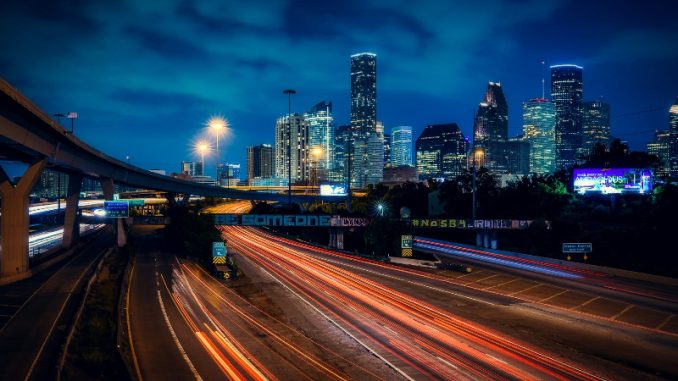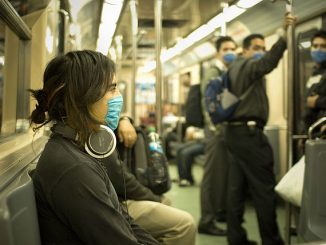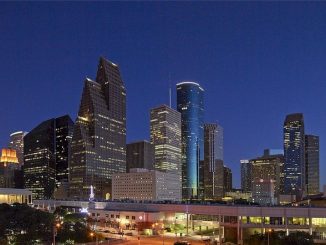
It is now August 2020, and we’re into month number six of the COVID-19 event here in Texas. There is some good news in that the caseloads, which surged during the past two months, have crested and have started a noticeable downward trend. The daily death toll has remained high, but there is very good news in that there are truckloads of potential vaccines being developed along with improved treatments. One of those new treatments, RLF-100 (aka Aviptadil), showed in limited human trials conducted at our own Houston Methodist hospital, the ability to defeat COVID-19 even in patients who were in advanced states of the disease.
Recently, one of my local friends, whom I met during the Floodway battles circa 2007-2008, made a comment on social media that he’s being kept up at night by a substantial increase in speed racing in his area of town. I replied back that since I live just off of Houston’s largest thoroughfare, I’ve also noticed quite a bump up in street car racing during this COVID-19 event. In fact, there’s a Facebook group called Houston’s Underground Races dedicated to the subject; it boasts a very respectable 122,000-plus likes.
But why the bump in street racing? The answers are obvious and straightforward. There always has been street racing, ever since cars were invented, fueled by big egos, bragging rights, and no doubt in some instances big money bets on who would win the race. Yet the spike in street racing in 2020 is no doubt connected to several different strands related to our response to COVID-19. First is that the government-imposed economic lockdowns have left plenty of people unemployed, with plenty of time on their hands and not much to do. And, with all that unemployment came a substantial decrease in traffic congestion.
Yet, a far greater cause of the substantial decrease in traffic congestion (and empty streets) has been from the widespread implementation of employers having employees working from home. Up until COVID-19, in a typical American city – and I would count Houston in this – the shares of modes by which Americans commuted back and forth to work were generally the following:
- 75-80% drove a car alone to work.
- 9-12% carpooled with neighbors or work colleagues to work.
- The remaining percentages, typically in the 8-14% range, were by all other forms of commuting, including working from home, taking transit to work, riding a bicycle, or walking to work. Each of these forms of commuting accounted for 1-5% of work trips (or in the case of working from home, not commuting at all).
These commuting percentages had remained stable in most American cities for the past 40 years or longer. However, COVID-19 has upended this commuting mix. Stanford University professor Nicholas Bloom stated in an interview at the end of June 2020 that a whopping 42 percent of Americans are now working from home! That is easily a tenfold increase in employees working from home. By the way, yours truly happens to be one of them.
Furthermore, professor Bloom has been doing survey work on a question that has been on my mind ever since the lockdowns were imposed: Will this immense upheaval in commuting to work will hold after COVID-19 subsides and is behind us? His answer is, partially yes. It seems that there will be some return to commuting back and forth to work, but by no means is the world going to return to the way it was before COVID-19.
I’ve written before about my beliefs in Friedrich Hayek’s Knowledge Problem, and in Ludwig von Mises’s economic calculation problem. Applied here, what Hayek and Mises would caution is that we don’t know exactly what the total effects of these COVID-19 inspired commuting transitions will be in the future on real estate markets and transportation markets. However, let’s just say that if I were a commercial real estate developer who had a big interest in downtown central cities and business districts (including Houston’s), I would be sweating bullets big time about the future viability of my real estate investments. Professor Bloom suggests that the current survey data from employers about the future is that employees who can work from home would be commuting into work 2-3 times per week in the future, while spending the remaining 2-3 days per week working from home. If that prediction has any truth, that would imply that the demand for office space from employers is going to take a big – and permanent – nosedive. Professor Bloom also notes that skyscrapers with lots of elevators are in particular danger as long as physical distancing is a thing people are concerned about. He implies that employers in the future are likely going to start looking at operating out of mid-rise type buildings that have larger footprints and offer employees more space.
And then there’s the transportation question…
One important question to ask is: How big has the drop in traffic congestion been with COVID-19? Well, the answer to that is a bit complicated, but we can always trust our eyes. There has clearly been a big, observable drop in rush hour traffic along Houston’s big thoroughfares. As for freeways, one place you can look for traffic counts is at the Houston Galveston Area Council’s traffic count database system. Just for kicks, I looked at the traffic counts for Interstate 10 at Voss, going both east and westbound. In January 2017, the traffic counts were around 169,000 – 170,000 going in both directions. In January 2020, at the start of COVID-19, the traffic counts were down to 147,700, a decline of some 14%, and that was at the beginning of 2020. Likewise, in looking at METRO’s monthly ridership reports, in April 2020, METRO reported a 53% drop in transit patronage, year on year, from April 2019. The May 2020 ridership drop was 48%, while the June 2020 ridership data indicated a 38% drop (after political authorities let up somewhat on the economic lockdowns). Meanwhile, local and state governments got big bailouts from the 2020 CARES Act passed by Congress. METRO, for example, got a $259 million bailout from the Feds from the CARES Act – more than enough to offset the $100 million in sales tax revenue the agency whined that it would lose from the COVID-19 economic lockdowns. The world of private small business might be getting decimated from the economic lockdowns, but the world of politics and government has roared on as though nothing ever happened thanks to robbing borrowing money from the kids and grandkids.
Yet here’s where I finally get to the point of this post. Just because state highway transportation agency and local transit agency tax budgets have been bailed out from the effects of the economic lockdowns by Congress does not mean that they are justified in spending tons of borrowed money on transportation projects. For example, one big local project that has been on the near-term horizon in Houston has been the I-45 expansion project. The HGAC traffic count database only has one location for traffic counts on the north side of I-45, at the Woodlands Parkway, but even that one location indicated a small drop in traffic counts from 2016 to 2020. I would have been counted a supporter of the I-45 expansion project before COVID-19, but now I would like to see what the traffic counts are on I-45 for 2020 and for the next 1-2 years before I could be convinced to continue to support the project. Likewise, METRO might have won a big bond referendum in November 2019, but when METRO’s own ridership reports are showing that METRO has lost 40-50% of their transit patronage, it becomes darned well near impossible for anybody in their right minds to justify METRO going on a big, pork-barrel-laden light rail and BRT bus lane building binge.
In the larger picture, both U.S. presidential candidates Donald Trump and Joe Biden have proposed big infrastructure expansions. Mr. Trump has pushed spending $2 trillion on infrastructure, while Mr. Biden has proposed a $2 trillion Green New Deal. I can’t help but oppose both of these – Mr. Trump’s proposal because it’s clear that we’re not going to have to spend that much on infrastructure when the demand for travel simply isn’t there, and Mr. Biden’s because less traffic congestion means that there is less pollution being pumped into the environment.
Alas, I doubt my view on these matters will prevail, but regardless of whether my hopes for less government action on these matters prevail, there’s little doubt at this point that COVID-19 has been, and will be the greatest single disrupting event on the transportation and land use debate in decades. My hope is that Houstonians (and Americans) will see that the wisest thing to do about this aspect of COVID-19 will be to wait for some years into the future before deciding what to do next.



